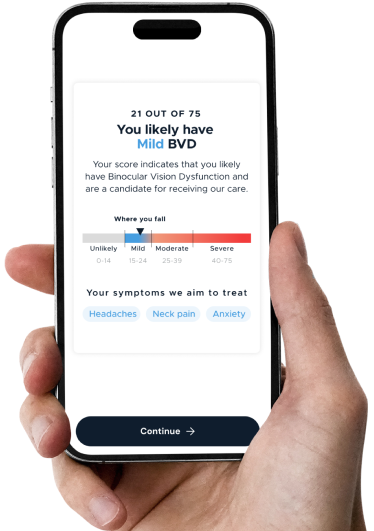For TBI patients with vision misalignment, treating hyperacusis with noise-cancelling devices can ease symptoms like dizziness, nausea, and visual discomfort. When combined with micro-prism lenses, noise reduction may further improve vestibular and visual symptoms that persist after initial vision therapy—enhancing outcomes for those with lingering dysfunction.
Amelioration of Hyperacusis Impacts Vestibular Symptoms & Binocular Vision Dysfunction in TBI patients
Introduction
Patients with binocular vision dysfunction (BVD) have vestibular symptoms (dizziness, nausea, gait abnormalities) as well as headache/head pressure, neck pain, anxiety and unclear vision. Treatment of BVD with glasses containing micro-prism lenses often reduces these symptoms. One cohort of patients with traumatic brain injury (TBI) did not improve as expected, and all admitted to hyperacusis. This study’s purpose is to demonstrate reduction of residual symptoms with noise cancelling devices.
Methods:
This retrospective study includes 23 patients with TBI presenting for annual vision examination, previously diagnosed with BVD and treated with glasses containing micro-prism lenses for >1 year, who had residual vestibular and BVD symptoms and who admitted to hyperacusis. Baseline data included completion of the modified Khalfa questionnaire, and subjective 0-10 scoring of headache, neck pain, dizziness, unsteadiness walking, nausea, anxiety and light sensitivity. Sound cancelling earbuds or headphones (Bose QC 30 earbuds or QC 25 headphones) were placed upon the patient and subjective symptom scoring was repeated. Then the vision examination was performed with the patient wearing the noise cancelling device. Post-examination, subjective symptom scoring was repeated with both the updated vision prescription and noise cancelling device in place.
Binocular Vision Dysfunction
Humans experience binocular vision, where both eyes work together as a team to see a single image. Binocular vision dysfunction (BVD) occurs when there is a breakdown such that a clear single image is not obtained. Rather, the person experiences diplopia (due to strabismus or tropia) or blurred / shadowed vision (due to heterophoria). Our research indicates that symptoms are most commonly due to very subtle vertical heterophorias (<2 diopters), which are below the sensitivity of the traditional testing. Treatment with a trial fitting process using microprism lenses results in an 80% improvement of subjective symptoms.
Hyperacusis & TBI & BVD
Hyperacusis is a debilitating hearing disorder characterized by an increased sensitivity to certain frequencies and volume ranges of sound resulting in difficulty tolerating everyday sounds. These are physically uncomfortable for the patient, but not for others.
Many of the patients treated in our clinic have BVD induced by a TBI. In this population, a subset was identified that did not respond as well as their cohorts to treatment of their BVD with microprism lenses. They had persistent dizziness, nausea, gait and balance disturbances (slow and unsteady), neck tension and headache/head pressure and anxiety. The one symptom they all had in common was hyperacusis.
Methods:
See Abstract for full details. In summary, patients with TBI previously treated for BVD with microprism lenses who had residual vestibular and BVD symptoms and who admitted to hyperacusis were treated with noise cancelling headphones or earbuds.

